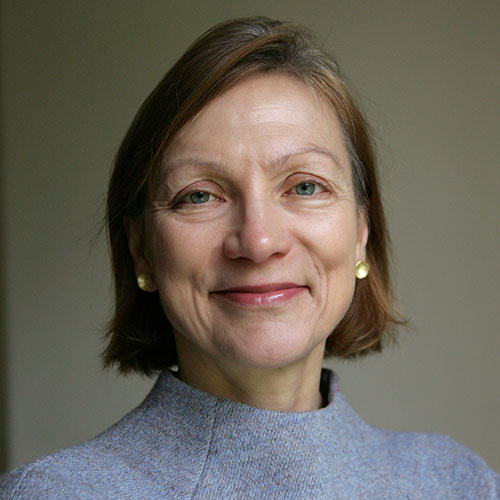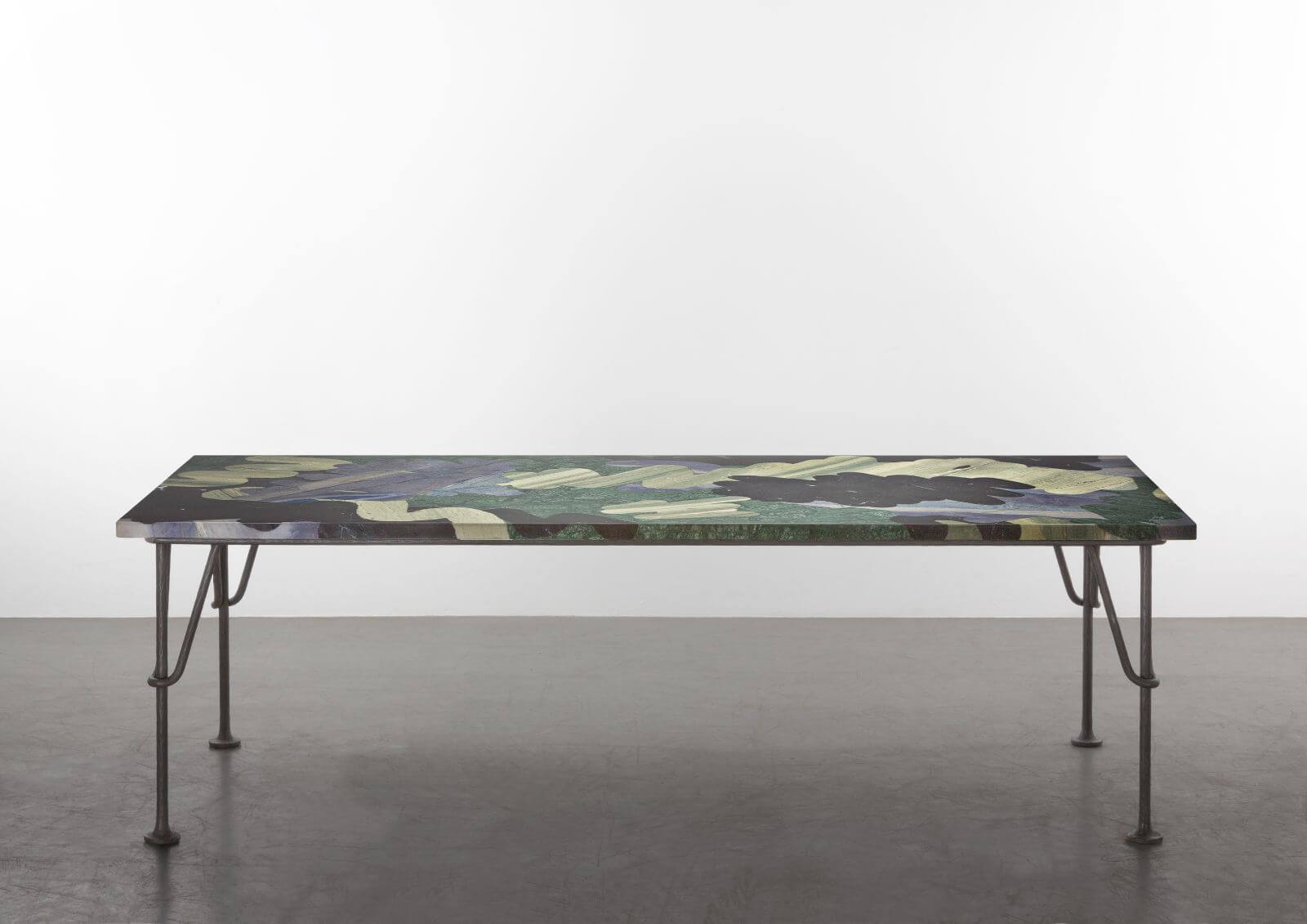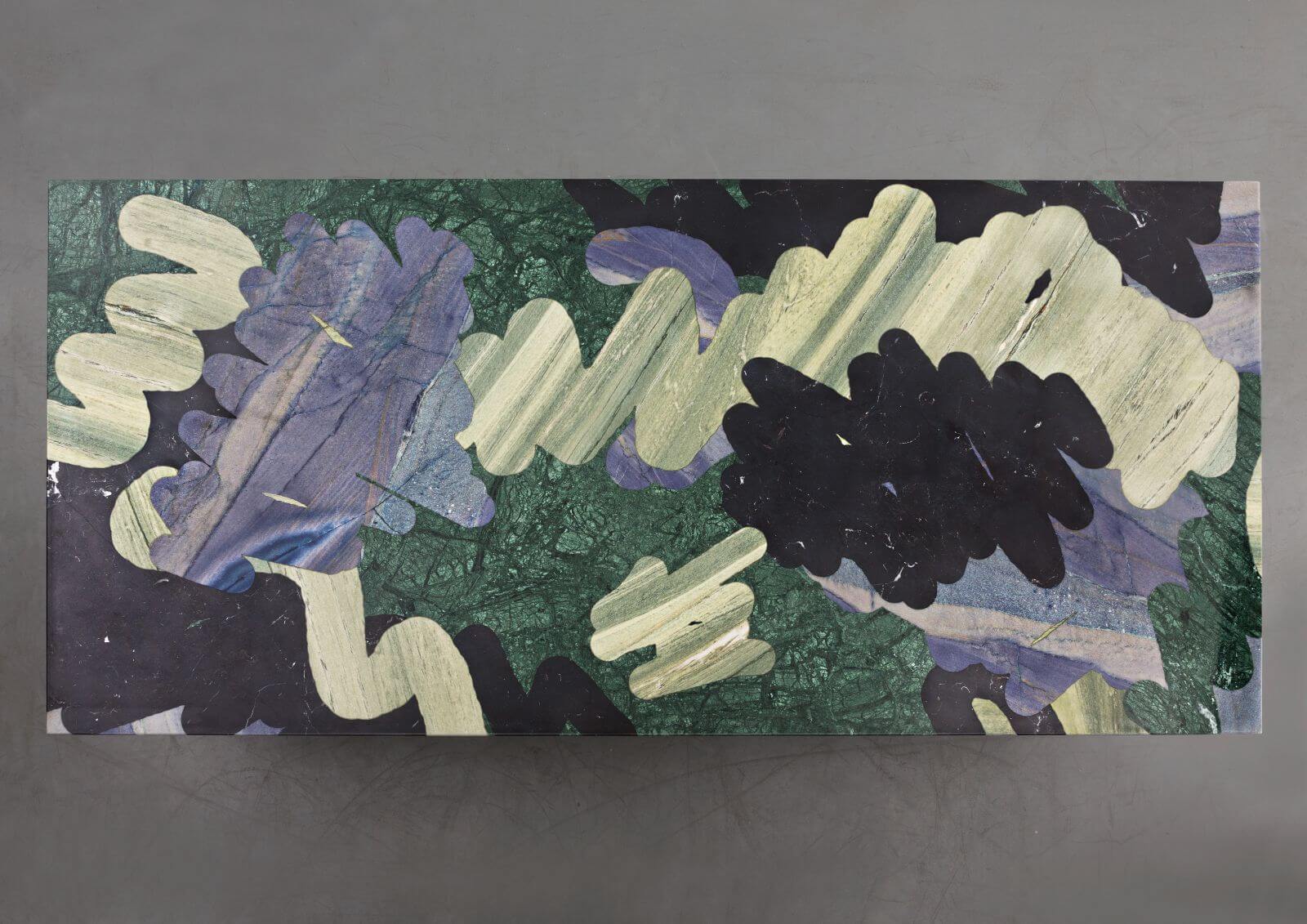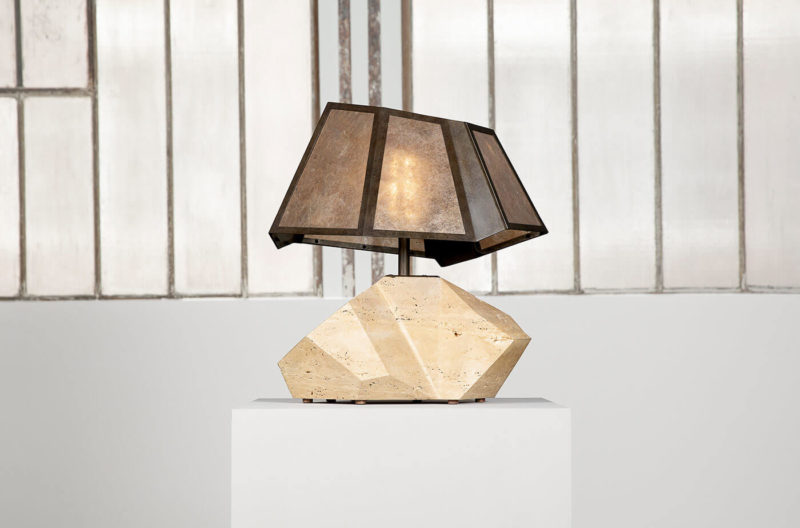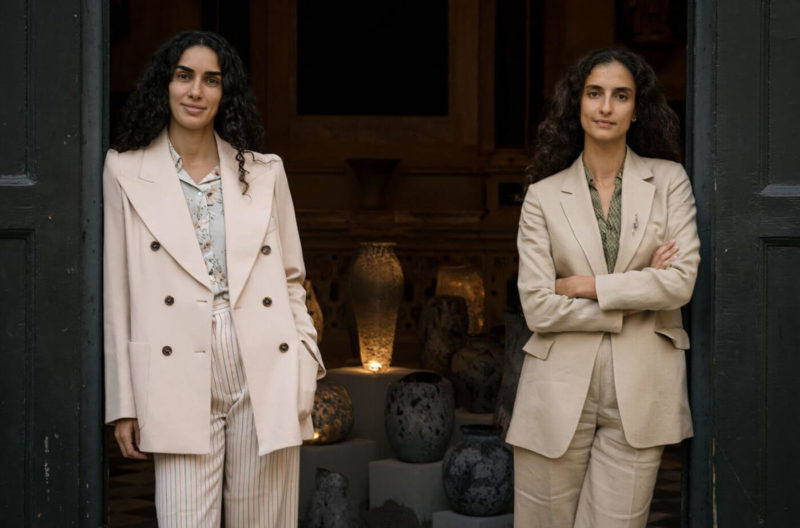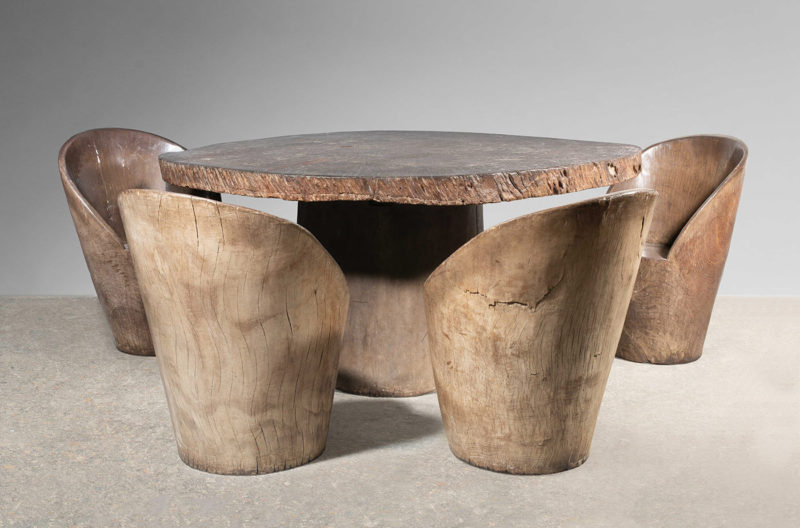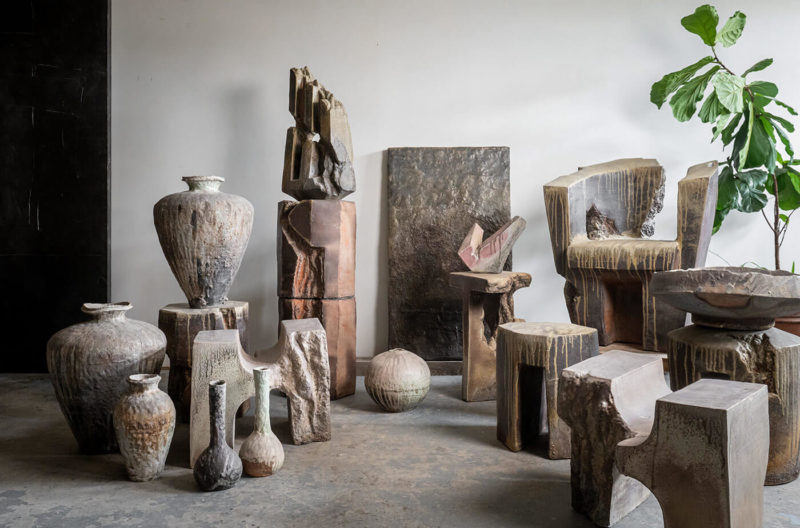START! Robert Stadler x Richard Artschwager
As the Robert Stadler x Richard Artschwager show opens in New York, TDE catches up with curator Glenn Adamson and designer Robert Stadler.
Carpenters Workshop Gallery, New York
September 29th – December 15th 2022
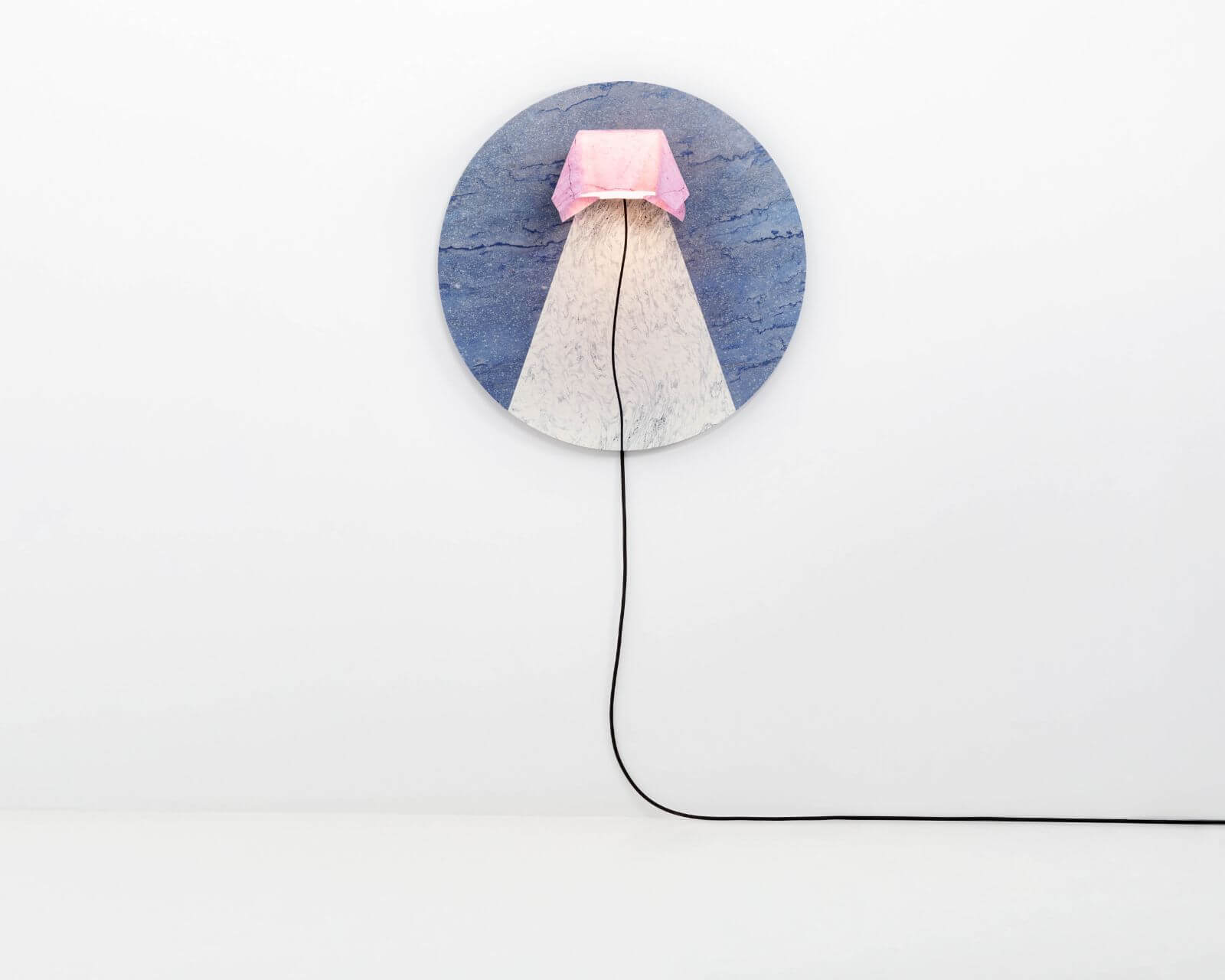
Robert Stadler, ‘Fantom Light’, 2022
COURTESY: Robert Stadler & Carpenters Workshop Gallery
LAST WEEK, CARPENTERS Workshop Gallery opened ‘START! Stadler x Richard Artschwager’, an exhibition curated by the critic Glenn Adamson in collaboration with Robert Stadler (b. 1966). The show places historic works by the American Pop artist Richard Artschwager (1923–2013) alongside new, transdisciplinary works by the Paris-based Austrian designer. The show’s title welds together elements from their names to suggest how the juxtaposition offers a catalyst for new thought.

Exhibition view, ‘START! Robert Stadler x Richard Artschwager’ at Carpenters Workshop Gallery New York
COURTESY: Robert Stadler & Carpenters Workshop Gallery
The show coincides with an exhibition, ‘Play Date’, of Stadler’s work at the Philip Johnson-designed Glass House in New Canaan, Connecticut. Ahead of START’s opening, The Design Edit spoke to Adamson and Stadler about the ideas behind the show and how it will transform our view of both artists’ work.
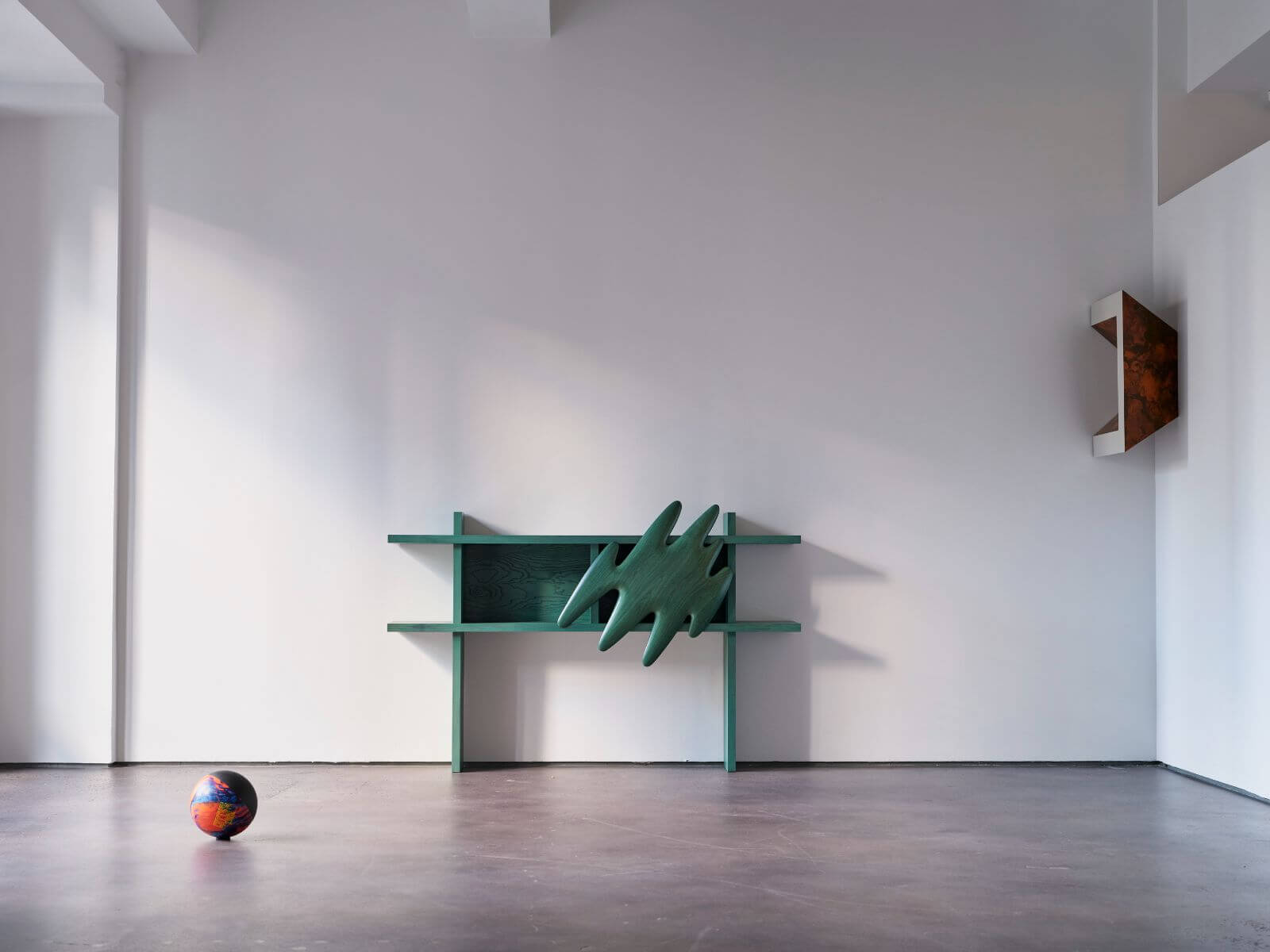
Robert Stadler at ‘START! Robert Stadler x Richard Artschwager’, Carpenters Workshop Gallery New York
COURTESY: Robert Stadler & Carpenters Workshop Gallery
TDE: Where did the idea for the show come from?
Glenn Adamson: I had seen the show Stadler had done at the Noguchi Museum in New York in 2017, as well as the joint Robert Stadler – Isamu Noguchi presentation at the Collective Design Fair that year. When I saw Stadler next, I asked him if he were to think of working with another artist, who might that be, and one of us came out with Artschwager.
Robert Stadler: One of us? It was definitely Glenn!
TDE: Why is it such a great idea?
Glenn Adamson: It’s a really good extension to Robert’s practice, but it is also an opportunity to look at Artschwager’s practice from a design point of view, which I don’t thing anyone has ever done. His work is understood first and foremost as major Pop Art sculpture, and then secondly, as sort of a sculptor’s occupation of the domain of the everyday. So the degree to which he uses furniture or objects as iconography is taken for granted. But, if you look at his biography, he started as a furniture maker before he was a sculptor.
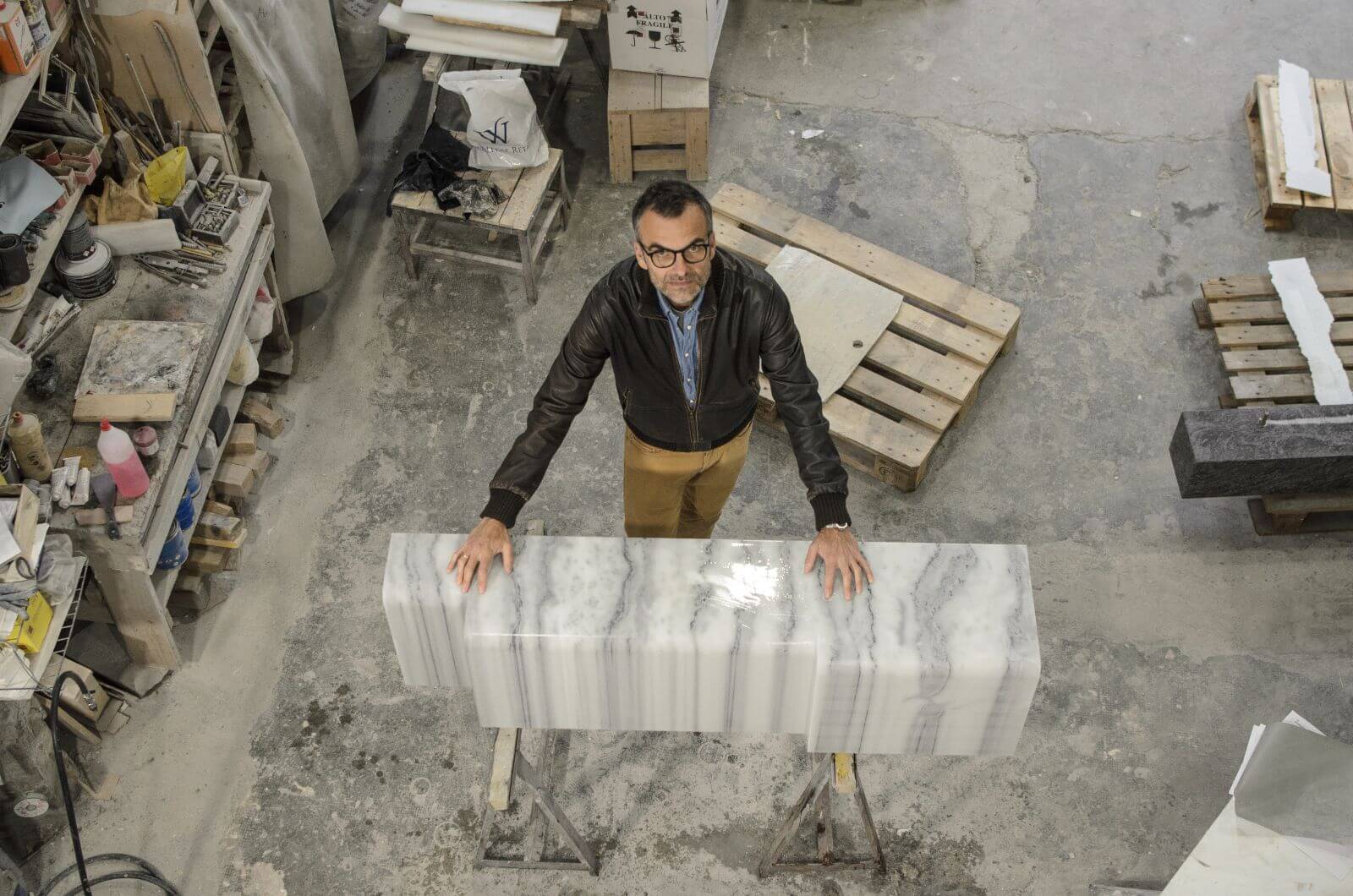
Robert Stadler’s studio
COURTESY: Robert Stadler & Carpenters Workshop Gallery
He had a fire at his studio in 1958 and took that as an opportunity to make a fresh start. Within three or four years he was showing at [pioneering art dealer Leo] Castelli. So, one reason that he is using furniture is biographical – he is returning to his craftsman’s roots. This is very different from Noguchi who was a polymath working in lots of different spheres. With Artschwager you really have someone coming out of art and occupying the domain of design. With Stadler you have the exact opposite – someone coming out of design and occupying a trend that looks very much like art. So the idea of the show is that it happens at the crossing of these two trajectories.
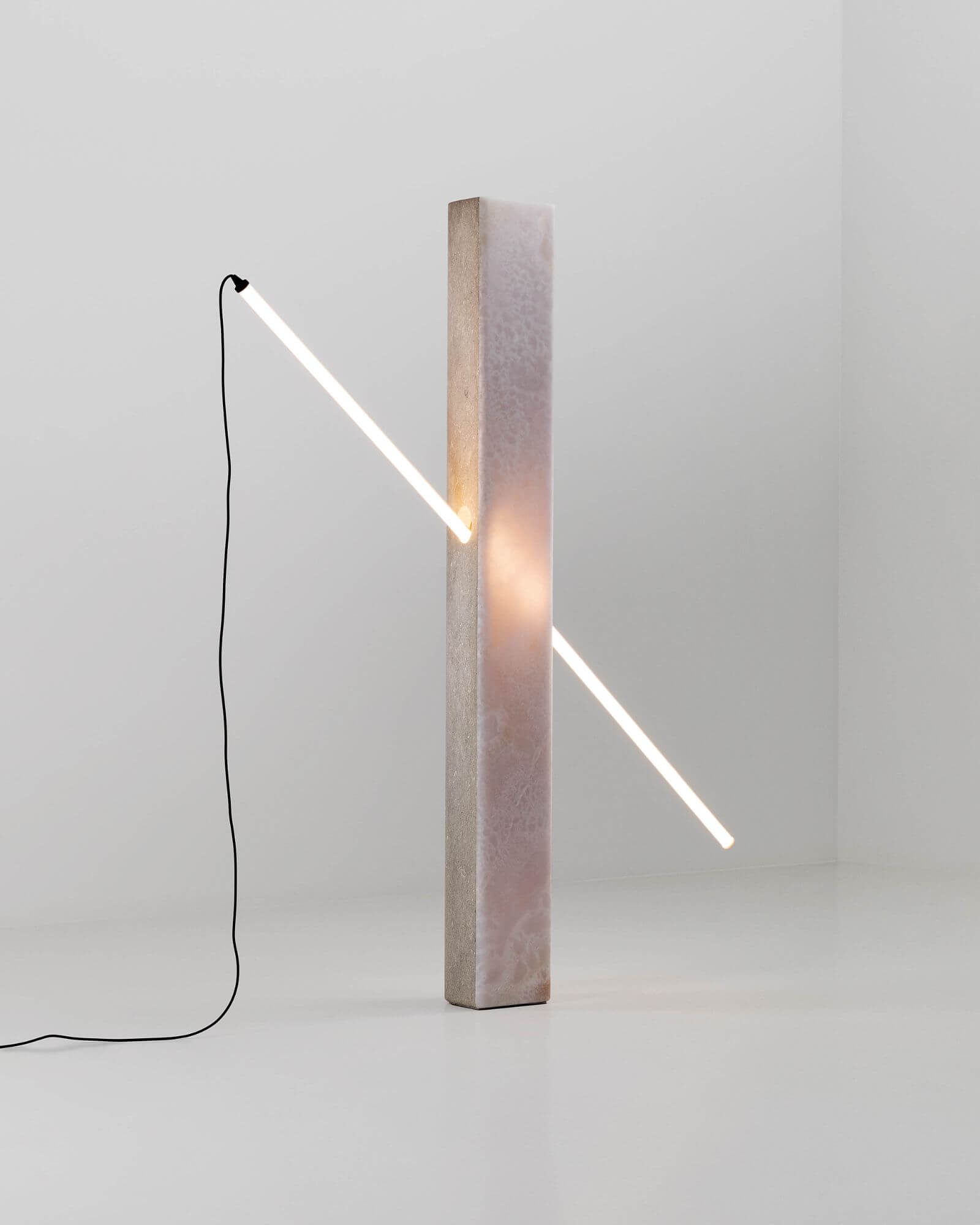
Robert Stadler, ‘Soft Screen Lamp’ 2021
COURTESY: Robert Stadler & Carpenters Workshop Gallery
Robert Stadler: Yes. I am a designer, but I am also really interested in doing things that question the stuff around us. What is this object? What do I do with it? Artschwager was also interested in the everyday, but he questioned it from the point of view of the artist. I first encountered Artschwager’s work in a show at the MAK (Museum of Applied Arts) in Vienna, in 2002, called ‘The Hydraulic Door Check’, which had a big impact on me. I also own several of his works, including a Yes/No Ball (1974).
TDE: So what’s in the show?
Glenn Adamson: One thread was thinking about which pieces or ideas of Robert’s would connect most obviously with Artschwager. For instance, the only preexisting piece of Robert’s in the show, the ‘pouf’, one of those works which go on the wall, is so much like one of Artschwager’s ‘blps’.
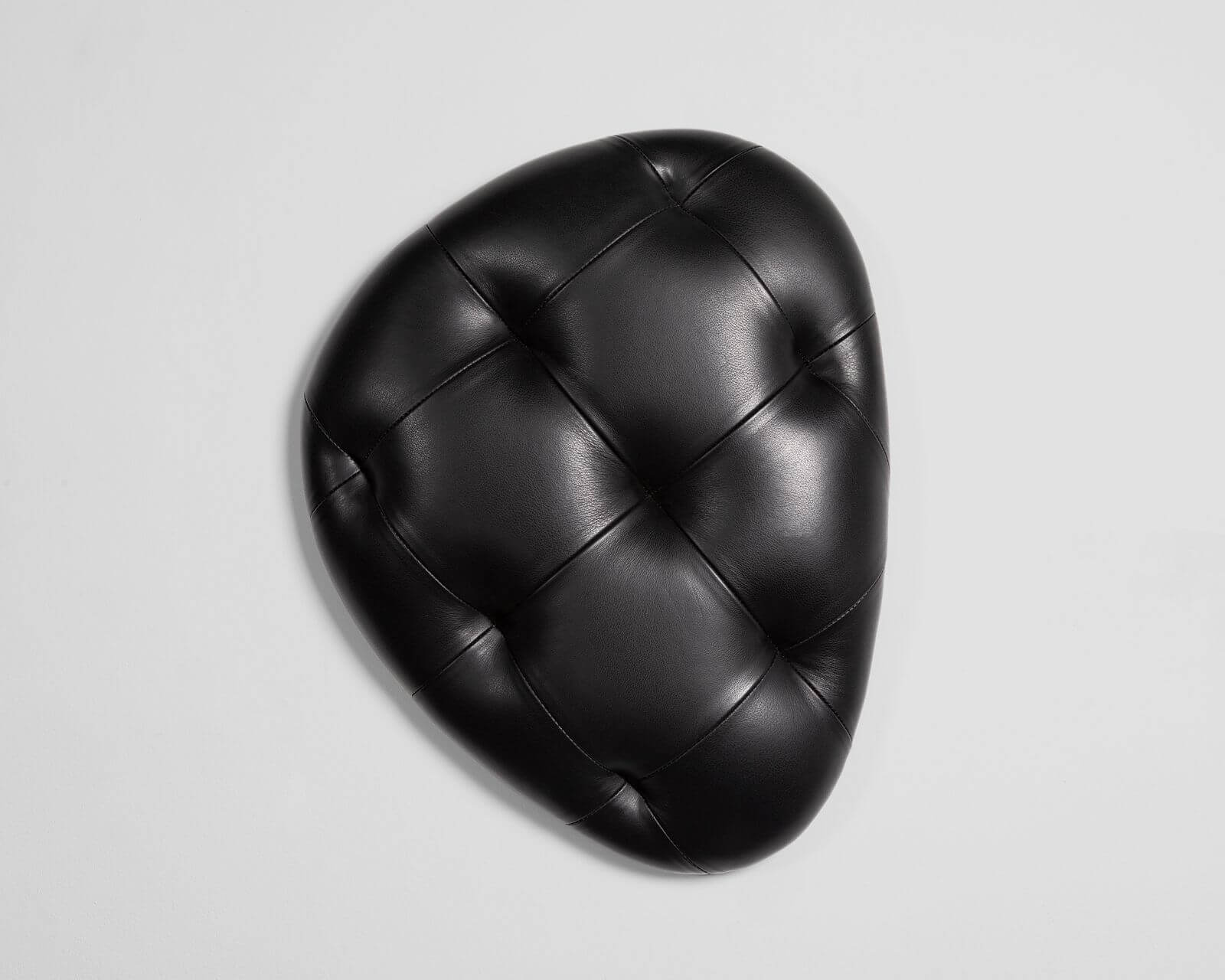
Robert Stadler, ‘Pools & Pouf’, 2004
COURTESY: Robert Stadler & Carpenters Workshop Gallery
Robert Stadler: And the bowling balls are a direct reference to the ‘Yes/No Balls’. My series I call ‘Richard’. But where Artschwager used black bowling balls, I used bowling balls from today that are anything but black. I then blacked out the image where Artschwager had the Yes/No. There is one in the gallery exhibition and the other eleven are at the Glass House.
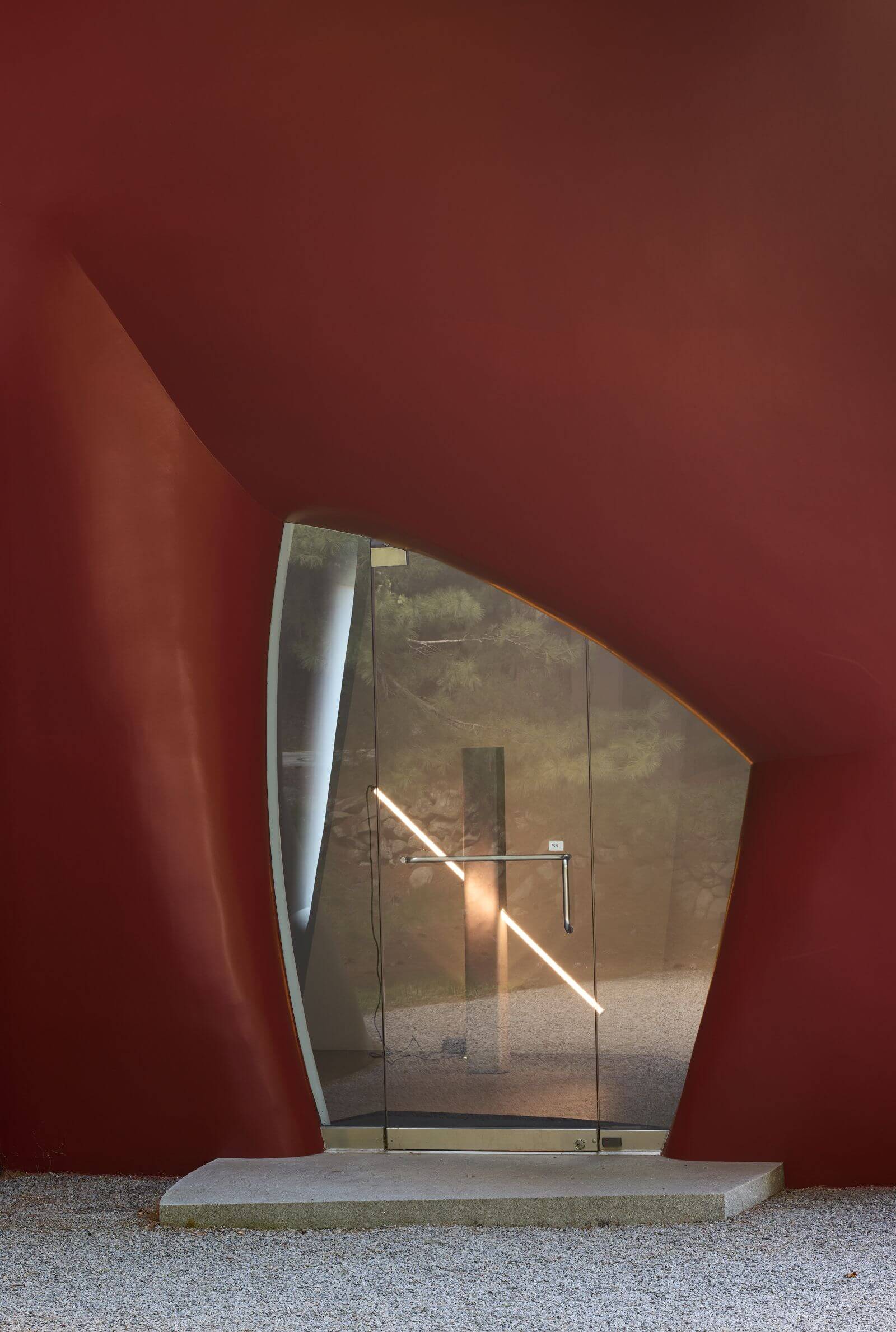
Exhibition view, ‘Robert Stadler: Playdate’ at The Glass House, 2022
COURTESY: Robert Stadler & The Glass House / PHOTOGRAPH: Mike Biondo
Glenn Adamson: The main body of work Robert has created for the show is the ‘3DPD’ group of objects, which has a whole story in its own right. He has taken this amazing striped marble, Striato Olimpico, with those perfect rows of lines that makes it so desirable in architectural projects, where it is always used as a veneer. And he has carved a block of it into all of these volumetric shapes – chairs, tables, benches.
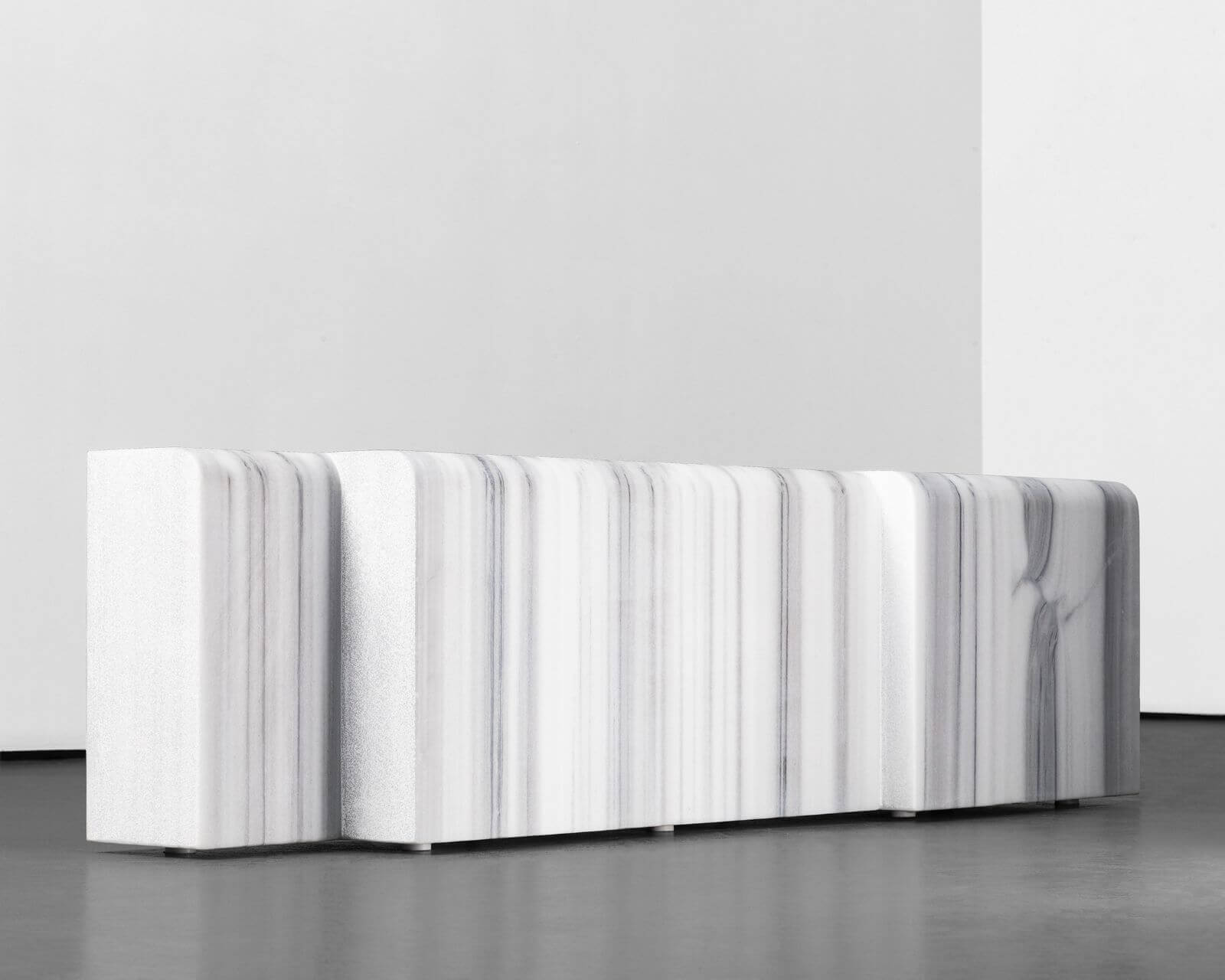
Robert Stadler, ‘3DPD Bench’, 2022
COURTESY: Robert Stadler & Carpenters Workshop Gallery
What happens is that the wrong side of the marble is exposed, so what you see partly is the break down of the clear signal – the stripes – into white noise – which relates to Artschwager’s interests in the material Celotex, when he is painting on that crappy, nubby material and the image is falling apart in front of your eyes.
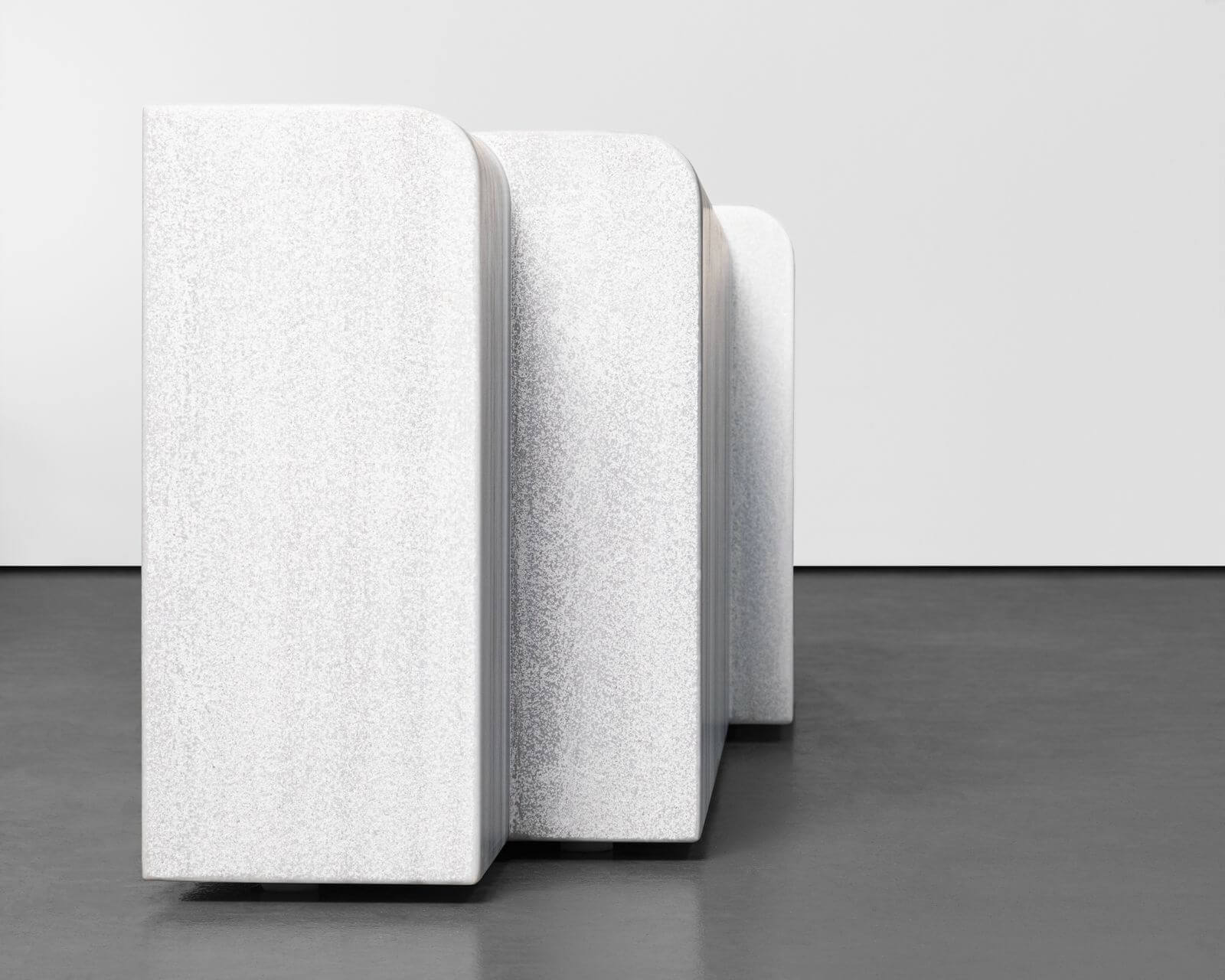
Robert Stadler, ‘3DPD Bench’, 2022 (detail)
COURTESY: Robert Stadler & Carpenters Workshop Gallery
Glenn Adamson: The ‘3DPD’ body of work is really the anchor for the show, and it also relates to the tradition of pietra dura – hence, ‘3DPD’ – of creating imagery with stone, only here in a very post modern, abstract way. They have that architectural quality to them. They look classical as well as like modernist abstraction.
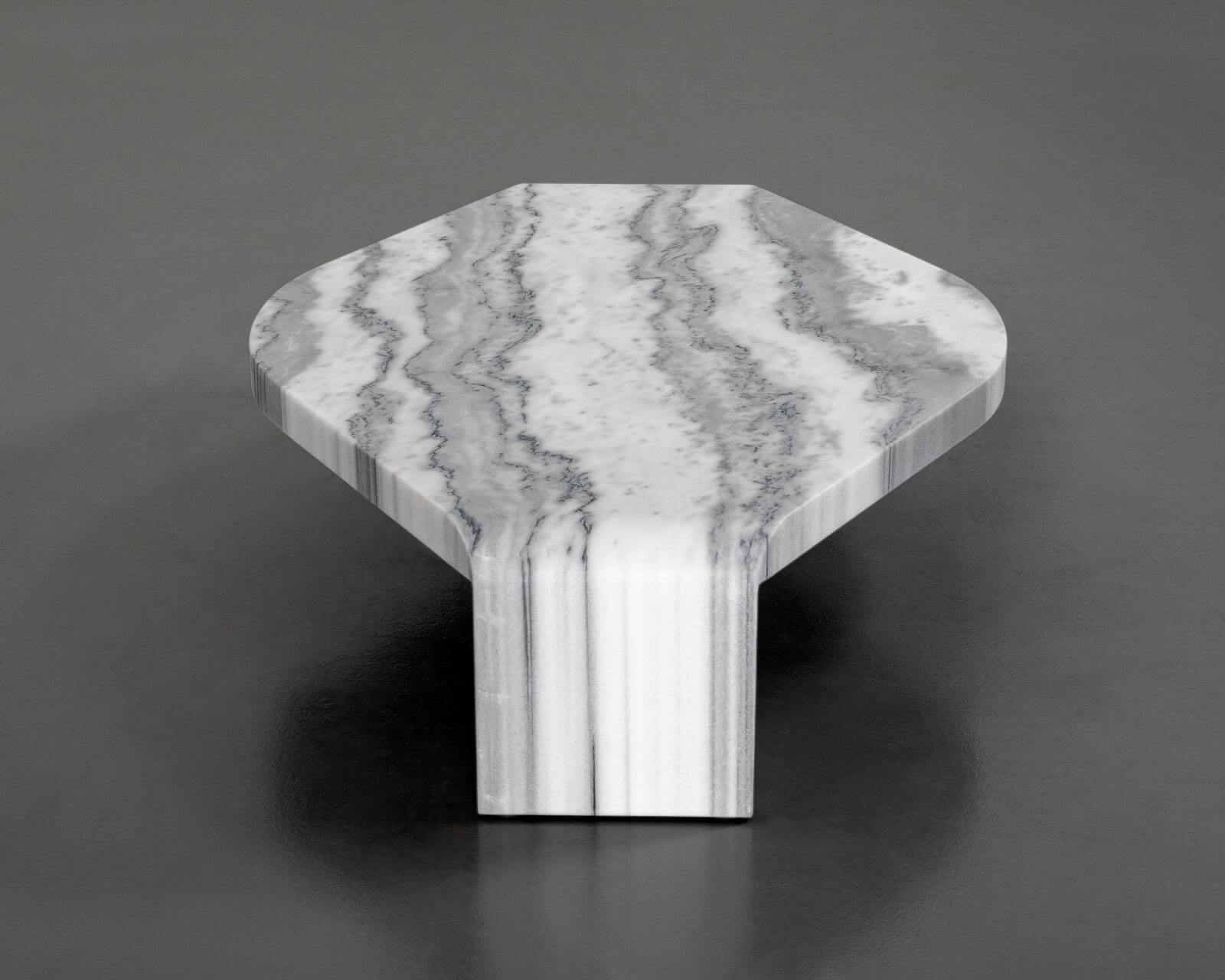
Robert Stadler, ‘3DPD Low Table 2’, 2022
COURTESY: Robert Stadler & Carpenters Workshop Gallery
Robert Stadler: The ‘3DPD’ series is probably the most important series of my career. Mostly, I didn’t want to make direct references to Artschwager, but of course everything I was making was influenced by this idea. The conversation between the two chairs that face each other in the show – my chair and then the Artschwager chair, which is not a chair – is emblematic of what the whole show is about.
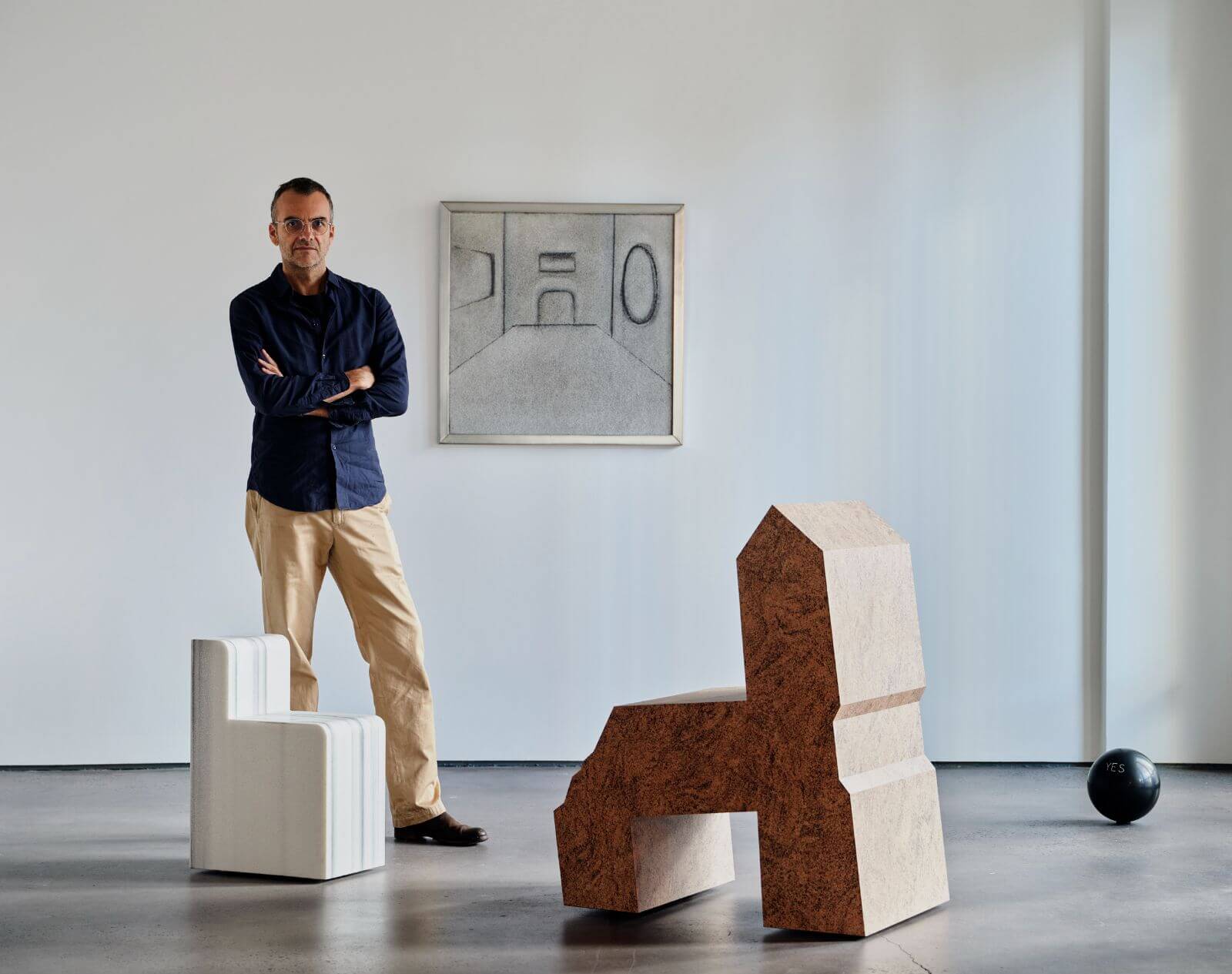
Robert Stadler at ‘START! Robert Stadler x Richard Artschwager’, Carpenters Workshop Gallery New York
COURTESY: Robert Stadler & Carpenters Workshop Gallery
Glenn Adamson: And then Robert decided to return to “the thing” [from his objects ‘thing #1’ and ‘thing #2’ in the 2016 series, ‘you name it’] and make a new version. It uses hydrographic printing, where you create a pattern as a film on water and then dip the object in and it picks up that pattern, to create a faux wood grain, which relates to the real wood of the objects. So there’s this vibration of actuality and simulation, which is so much connected to what Artschwager was doing with Formica and other faux materials.
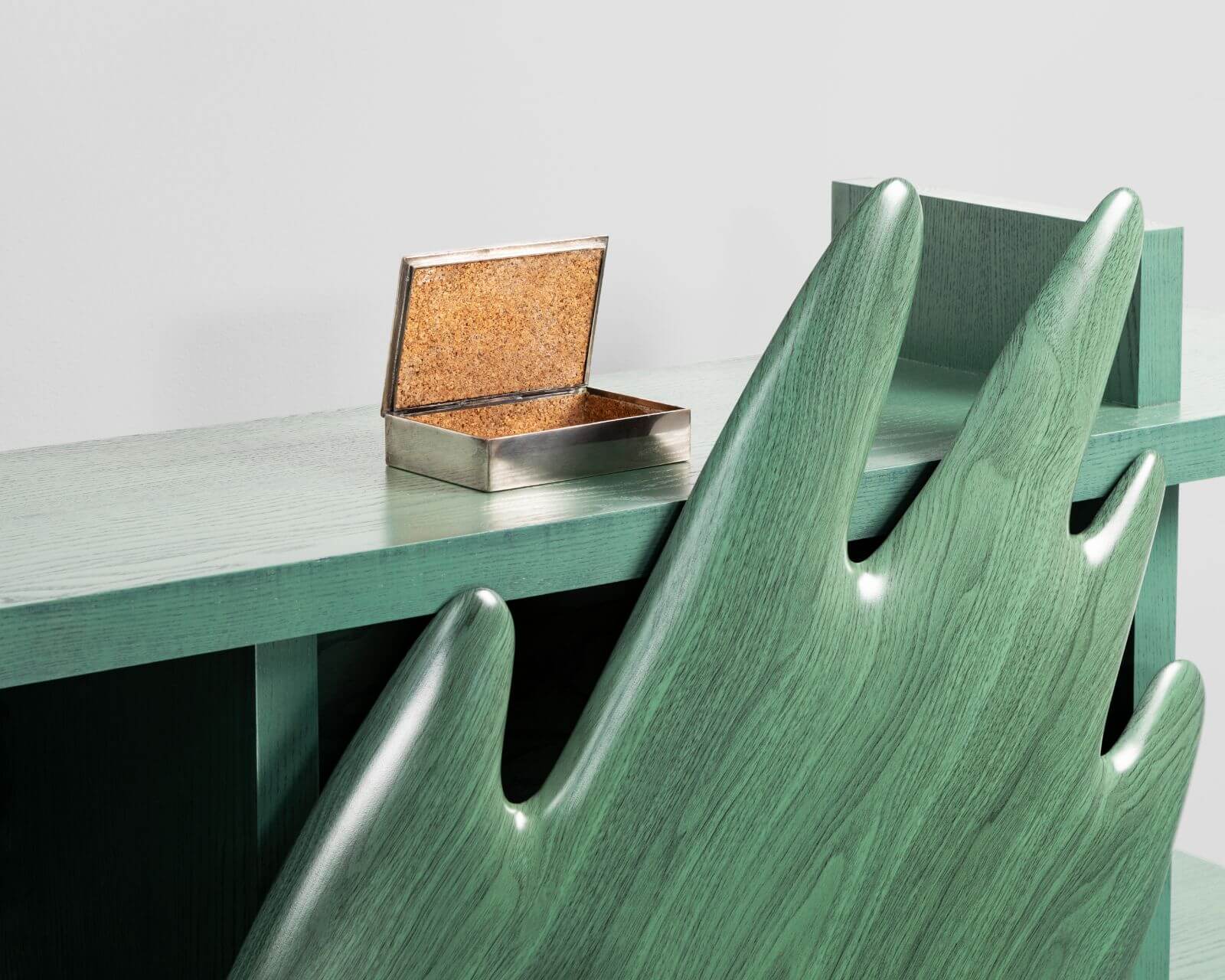
Robert Stadler, ‘Return of the Thing’ console, 2021 (detail)
COURTESY: Robert Stadler & Carpenters Workshop Gallery
Robert Stadler: This is really about the appearance of an object – the skin of an object – and its identity. ‘The Return of the Thing’ is a technologically-updated version of pattern-making. It is really from today. Whereas Formica is still a 3D object – you can see it as an object in itself, on top of whatever it covers – hydraulic printing takes the idea of the skin further.
-
Robert Stadler, ‘New Paintings #1 Dining Table’, 2019
COURTESY: Robert Stadler & Carpenters Workshop Gallery
-
Robert Stadler, ‘New Paintings #1 Dining Table’, 2019 (detail)
COURTESY: Robert Stadler & Carpenters Workshop Gallery
TDE: Tell me a bit about ‘Play Date’ at the Glass House in Connecticut?
Robert Stadler: I was invited to do an exhibition there for 2020, which was of course postponed. I chose the title because one of the facets of Philip Johnson I admire is his playfulness – and also his recognition that playing can be fun but also dangerous. He had the phrase, “safe danger”, about architecture – meaning, for instance, that there are no hand rails for the stairs. The bowling balls scattered on the staircase respond to that.
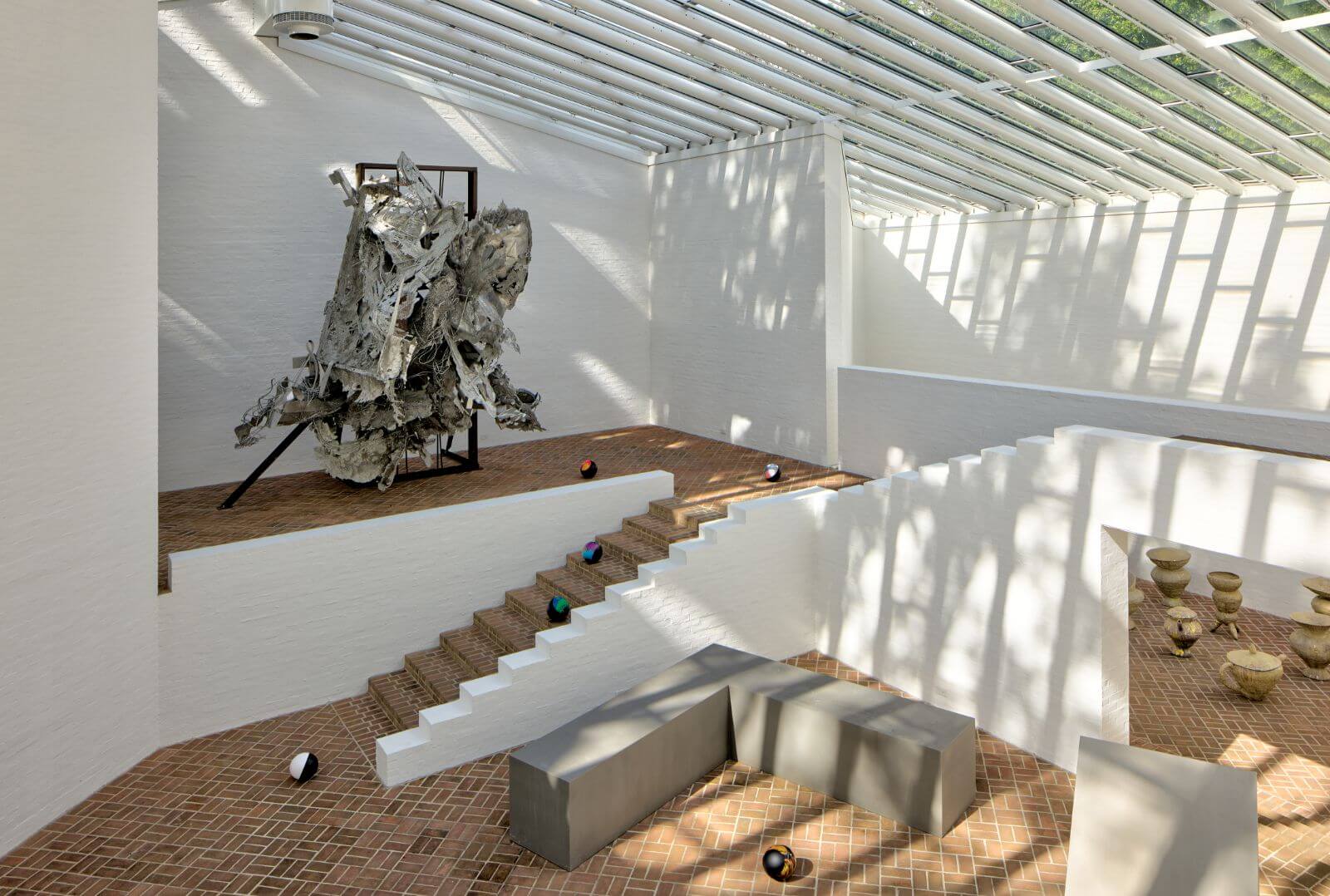
Exhibition view, ‘Robert Stadler: Playdate’ at The Glass House, 2022
COURTESY: Robert Stadler & The Glass House / PHOTOGRAPH: Mike Biondo
Glenn Adamson: And Robert is also exploring transparency…
Robert Stadler: … because the Glass House is not just one building but a collection of buildings, all very different. I didn’t just want to put work in one space – I have put work in all the different houses and outside.
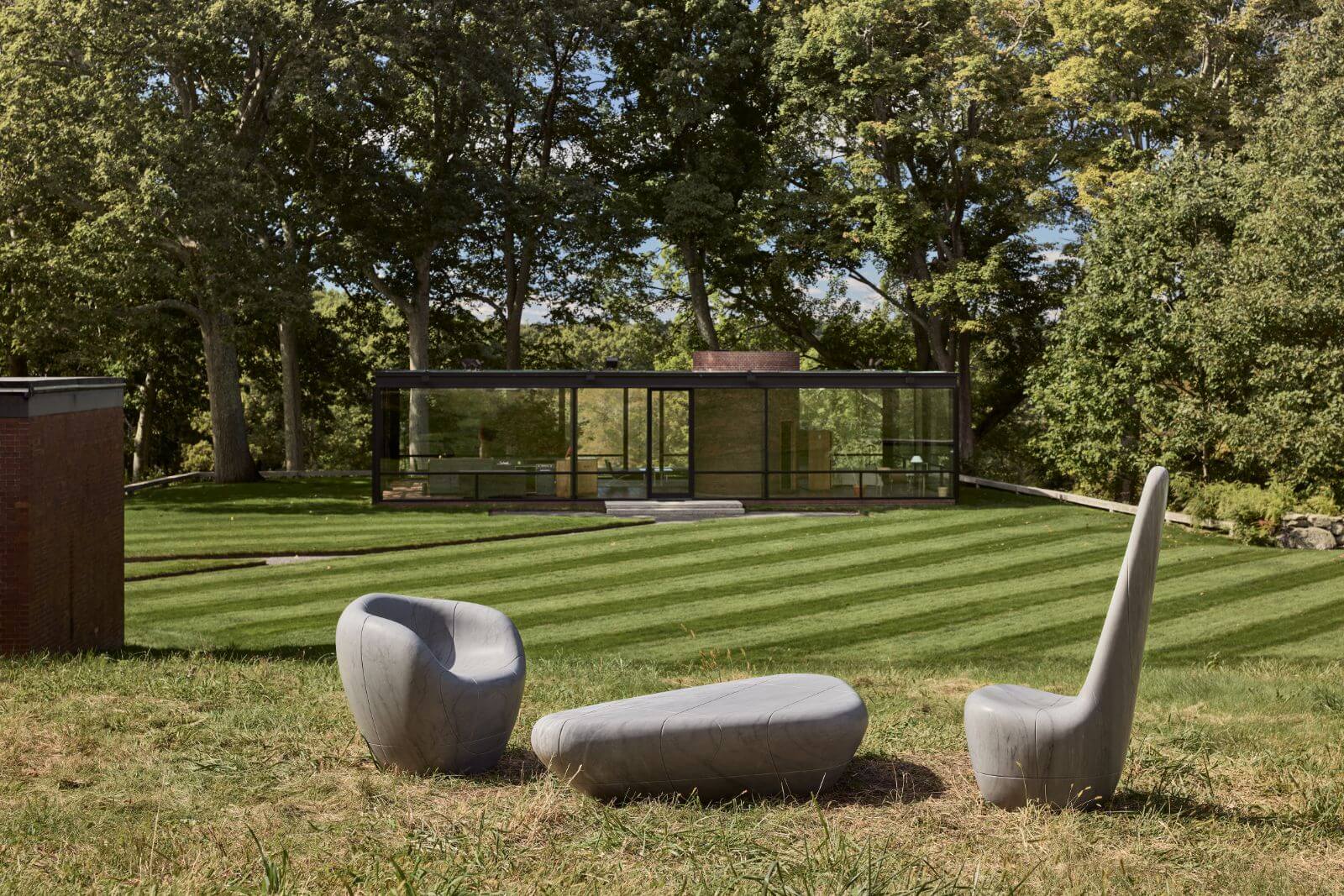
Exhibition view, ‘Robert Stadler: Playdate’ at The Glass House, 2022
COURTESY: Robert Stadler & The Glass House / PHOTOGRAPH: Mike Biondo
Philip Johnson and Noguchi were against being defined by a recognisable look or style. I too say that what defines me is not a look but a way of working, which I define as Invasive, Shifting, Absurd and Exercise. Exercise is the simplest – to try and design a good chair.
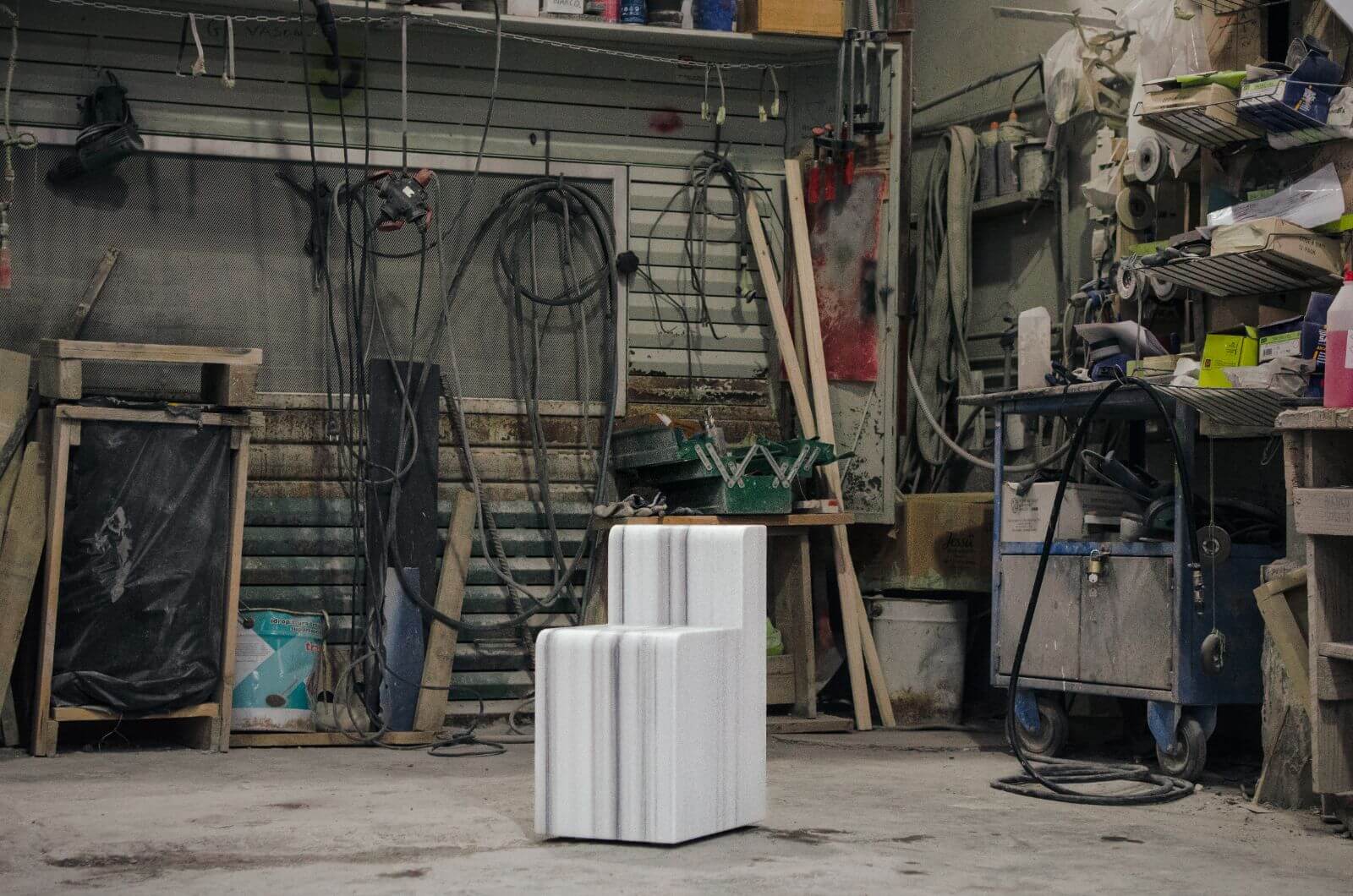
Robert Stadler’s studio
COURTESY: Robert Stadler & Carpenters Workshop Gallery
TDE: What Glenn do you think the two shows together reveal about the artists’ respective oeuvres?
Glenn Adamson: That is a key question. One thing that everyone will get is that you have this historic artist working at the intersection of art and design, and then you have a contemporary designer working at the same intersection, and they just lock together. It is astonishing how relevant the two bodies of work are to each other, and it makes you think about the relative fame of these two figures – how they fit into the hierarchies of art and design.
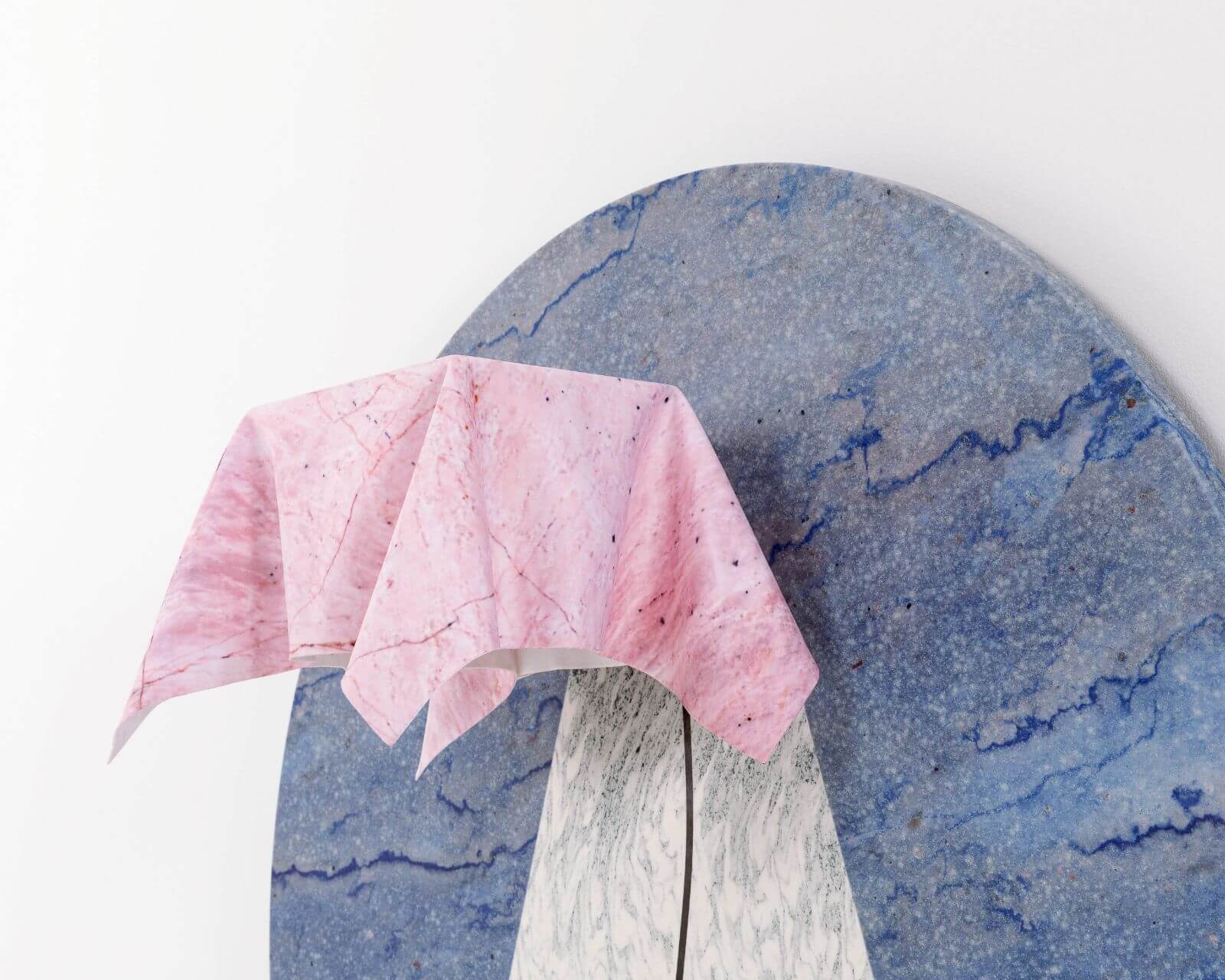
Robert Stadler, ‘Fantom Light’, 2022 (detail)
COURTESY: Robert Stadler & Carpenters Workshop Gallery
There is a tremendous tendency for people to say that they are a conceptual designer, and I think in fact that it is extremely rare for a designer to be working in a methodology that is comparable to, and informed by, conceptual art. And although Artschwager is usually considered a Pop artist, he is at least as much a conceptual artist. His motivations and way of going about things were much more like Kosuth, Robert Morris or Sol LeWitt than like Warhol or Lichtenstein. You would position him art historically as a link between movements.
And Robert too is very steeped in the Warholian tradition – reflected in his interest in the kitsch imagery on the surface of the bowling balls. So they are both operating at the Pop art/Conceptual art interface.
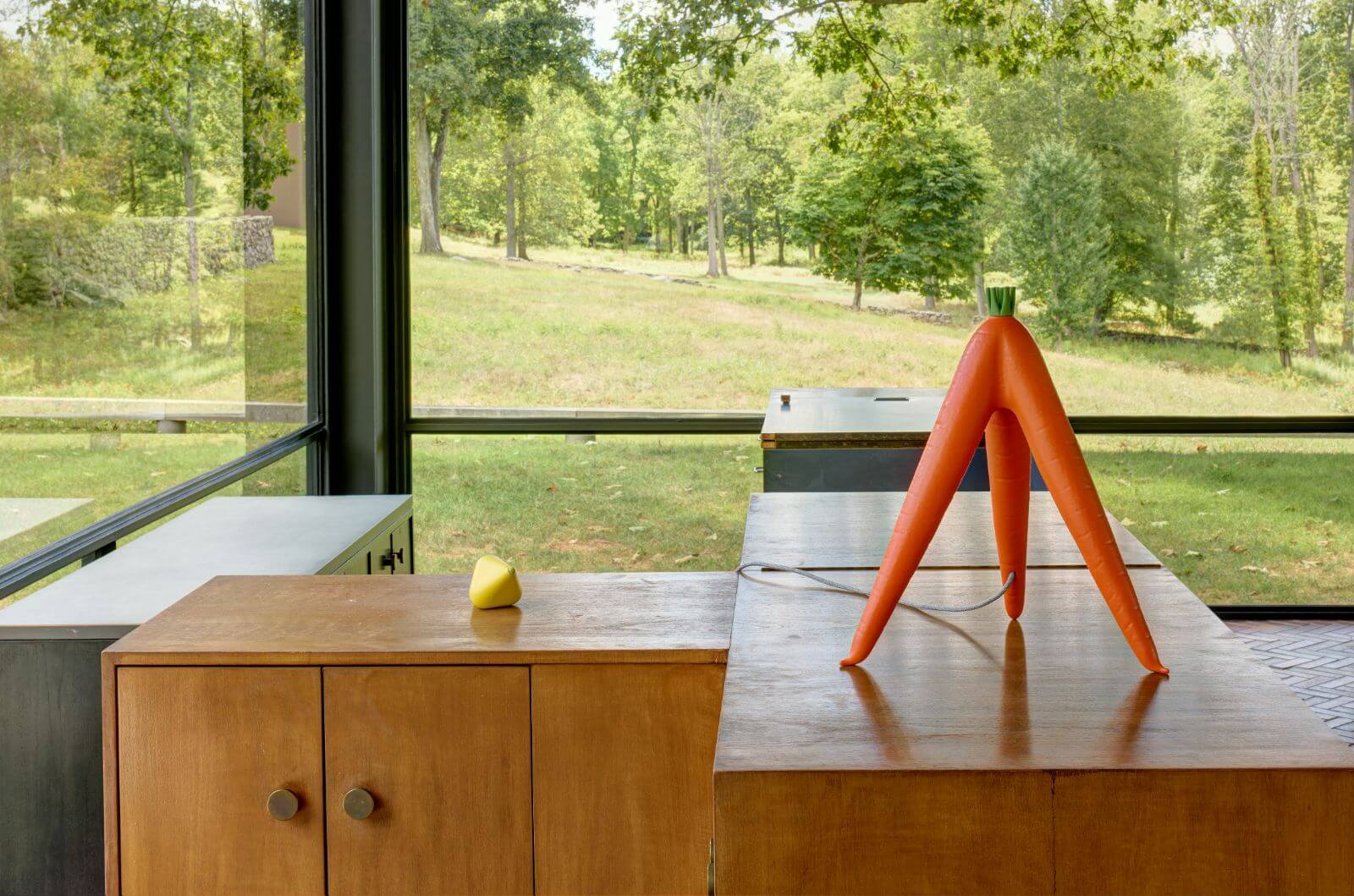
Exhibition view, ‘Robert Stadler: Playdate’ at The Glass House, 2022
COURTESY: Robert Stadler & The Glass House / PHOTOGRAPH: Mike Biondo
We do tend to overuse the word conceptual in the design world, but this is the real thing. This is hardcore, informed by the legacy of that art historical moment and extending the trajectory.
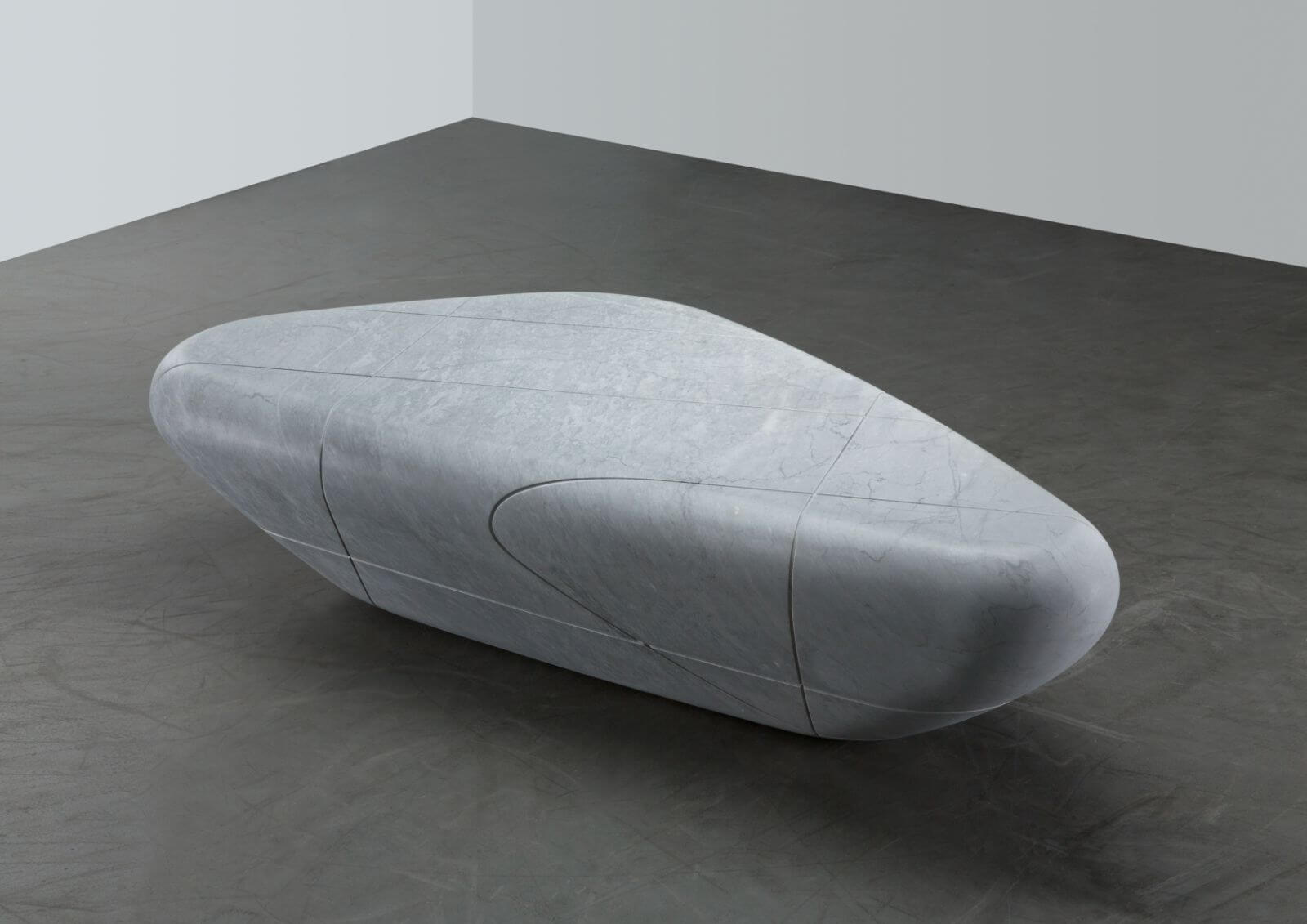
Robert Stadler, ‘Ditto Low Table’, 2019
COURTESY: Robert Stadler & Carpenters Workshop Gallery
‘START! Robert Stadler x Richard Artschwager’ at Carpenters Workshop Gallery New York.
